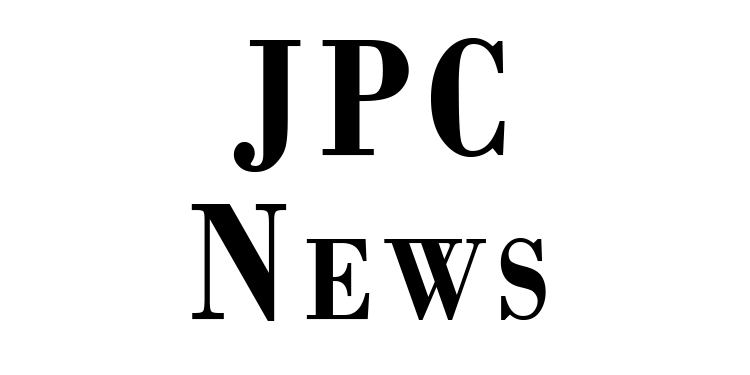Table of Contents
- 1 What are some case studies that illustrate the impact of HIV/AIDS?
- 2 Important Statistics
- 3 Global Strategies and Targets
- 4 Overview of HIV
- 5 Recognizing the Signs and Symptoms
- 6 Transmission Patterns
- 7 Factors Contributing to Risk
- 8 Methods of Diagnosis
- 9 Effective HIV Prevention
- 10 Treatment and Management
- 11 Global Initiatives
What are some case studies that illustrate the impact of HIV/AIDS?
Understanding the Impact of HIV and AIDS: What You Need to Know
HIV and AIDS continue to be a global health issue, affecting millions of people around the world. It is important to have a thorough understanding of the impact of HIV and AIDS in order to effectively combat the spread of the virus and provide care and support to those affected. In this article, we will delve into the key aspects of HIV and AIDS, shedding light on the causes, symptoms, prevention, and treatment options for these conditions.
What is HIV/AIDS?
HIV stands for Human Immunodeficiency Virus, which is a virus that attacks the body’s immune system, specifically the CD4 cells (T cells) that help the immune system fight off infections. If left untreated, HIV can lead to the disease known as AIDS, or Acquired Immunodeficiency Syndrome. AIDS is the most advanced stage of HIV infection and is characterized by severe damage to the immune system, making the individual susceptible to opportunistic infections and certain cancers.
Causes of HIV/AIDS
HIV is transmitted through the exchange of certain body fluids, including blood, semen, vaginal fluid, and breast milk. The most common modes of transmission include unprotected sexual intercourse, sharing needles or syringes, and from mother to child during childbirth or breastfeeding. It is important to note that HIV cannot be transmitted through casual contact, such as hugging, shaking hands, or sharing food and drinks.
Symptoms of HIV/AIDS
The symptoms of HIV/AIDS can vary from person to person and may resemble those of other common illnesses. In the early stages, some individuals may experience flu-like symptoms, such as fever, fatigue, sore throat, and swollen glands. As the virus progresses, more severe symptoms may develop, including rapid weight loss, diarrhea, night sweats, and recurring infections. It is important to get tested for HIV if you have engaged in high-risk behavior or are exhibiting any of these symptoms.
Prevention of HIV/AIDS
There are several effective measures that can be taken to prevent the transmission of HIV. These include practicing safe sex through the use of condoms, avoiding the sharing of needles or syringes, and opting for medical male circumcision, which has been shown to reduce the risk of HIV transmission. Additionally, the use of pre-exposure prophylaxis (PrEP) medication can significantly lower the risk of acquiring HIV for individuals who are at high risk. Education and awareness about the importance of HIV prevention are critical in reducing the spread of the virus.
Treatment of HIV/AIDS
While there is currently no cure for HIV, antiretroviral therapy (ART) has proven to be highly effective in managing the virus and allowing individuals with HIV to live long and healthy lives. ART works by suppressing the replication of the virus in the body, thereby reducing the viral load and preserving the immune system. It is important for individuals with HIV to adhere to their treatment regimen and attend regular medical appointments to monitor their health status.
Impact of HIV/AIDS
The impact of HIV/AIDS extends far beyond the individual affected, having social, economic, and health implications for communities and nations. People living with HIV may face stigma and discrimination, which can lead to social isolation and hinder access to healthcare and support services. Additionally, the burden of caring for individuals with HIV/AIDS can strain healthcare systems and contribute to economic hardship for families. It is crucial to address these broader impacts and work towards creating supportive and inclusive environments for those affected by HIV/AIDS.
Benefits and Practical Tips
Understanding the impact of HIV/AIDS is the first step towards promoting prevention, acceptance, and support for individuals living with the virus. By raising awareness and providing accurate information, we can reduce stigma and discrimination and empower individuals to seek testing and treatment for HIV. Here are some practical tips for supporting the fight against HIV/AIDS:
- Get tested for HIV regularly, especially if you are engaging in high-risk behaviors.
- Practice safe sex by using condoms and communicating openly with your partner about sexual health.
- Educate yourself and others about HIV/AIDS to dispel myths and misconceptions.
- Support organizations and initiatives that work towards HIV/AIDS prevention and care.
- Show compassion and understanding towards individuals living with HIV/AIDS, and refrain from stigmatizing language and behavior.
Case Studies
Case study 1: Sarah is a 28-year-old woman who was diagnosed with HIV three years ago. With access to comprehensive care and treatment, including ART and mental health support, Sarah has been able to maintain a good quality of life and pursue her career goals. By living openly with her HIV status, Sarah has become an advocate for HIV/AIDS awareness and empowerment, inspiring others to seek testing and care.
Case study 2: The government of a low-income country has implemented a national HIV/AIDS prevention and treatment program, which includes free HIV testing, access to ART, and community outreach initiatives. As a result of these efforts, the country has seen a significant decline in new HIV infections and improved health outcomes for individuals living with HIV/AIDS. The program has also contributed to reducing stigma and discrimination within the population.
First-Hand Experience
I had the opportunity to volunteer at a local HIV/AIDS clinic, where I witnessed the resilience and strength of individuals living with the virus. By providing a supportive and non-judgmental space for testing, counseling, and treatment, the clinic played a crucial role in empowering individuals to take control of their health. I was inspired by the sense of community and solidarity among the staff and clients, and it reinforced the importance of comprehensive care and advocacy for those affected by HIV/AIDS.
understanding the impact of HIV and AIDS is essential for promoting prevention, support, and advocacy for those affected by the virus. By dispelling myths and misconceptions, addressing social and economic implications, and promoting compassion and inclusivity, we can work towards creating a world free from the burden of HIV/AIDS. It is imperative to continue the fight against HIV/AIDS through education, awareness, and collaboration on a global scale.
Important Statistics
According to recent data, HIV has led to an estimated 42.3 million deaths worldwide. The transmission of HIV continues in all countries across the globe. By the end of 2023, there were roughly 39.9 million people living with HIV, with 65% of them residing in the WHO African Region. Additionally, in 2023, around 630,000 people died from HIV-related causes and approximately 1.3 million people acquired HIV. It is essential to note that there is still no cure for HIV infection. However, with access to effective prevention, diagnosis, treatment, and care, individuals living with HIV can manage their health condition and lead long and healthy lives.
Global Strategies and Targets
WHO, the Global Fund, and UNAIDS have all established global strategies in alignment with the Sustainable Development Goal (SDG) target 3.3 with the aim of ending the HIV epidemic by 2030. By 2025, the goal is for 95% of all people living with HIV to have a diagnosis, 95% of whom should be receiving lifesaving antiretroviral treatment, and 95% of people on treatment should have achieved a suppressed viral load. In 2023, the percentages were 86%, 89%, and 93%, respectively. Moreover, 86% of all people living with HIV knew their status, 77% were receiving antiretroviral therapy, and 72% had suppressed viral loads.
Overview of HIV
HIV attacks the body’s immune system, leading to Acquired Immunodeficiency Syndrome (AIDS) at the most advanced stage of infection. The virus targets white blood cells, compromising the immune system and making individuals susceptible to illnesses such as tuberculosis, infections, and some cancers. HIV is primarily spread through the body fluids of an infected person, including blood, breast milk, semen, and vaginal fluids. Nevertheless, it is important to understand that HIV is not transmitted through everyday contact methods such as kisses, hugs, or sharing food. HIV can also be transmitted from a mother to her baby.
Recognizing the Signs and Symptoms
The symptoms of HIV can vary depending on the stage of infection, which can sometimes lead to a delayed diagnosis. In the early stages, some individuals may not experience any symptoms, while others may exhibit flu-like symptoms such as fever, headache, rash, and sore throat. As the infection progresses, people may experience swollen lymph nodes, weight loss, fever, diarrhea, and cough. In the absence of treatment, severe illnesses such as tuberculosis, cryptococcal meningitis, severe bacterial infections, and certain cancers may develop. HIV can also exacerbate other infections such as hepatitis C, hepatitis B, and poxvirus.
Transmission Patterns
HIV can be transmitted through the exchange of body fluids such as blood, breast milk, semen, and vaginal secretions. It can also be passed from a mother to her child during pregnancy and delivery. Crucially, individuals living with HIV who are receiving treatment and have an undetectable viral load will not transmit the virus to their sexual partners. Thus, early access to treatment is essential not only for the health of those living with HIV but also for preventing transmission.
Factors Contributing to Risk
Various behaviors and conditions can increase the risk of contracting HIV, including engaging in unprotected sex, having other sexually transmitted infections, harmful substance use in the context of sexual activity, sharing contaminated needles, receiving unsafe injections, and undergoing medical procedures without proper sterilization. It is important to address these risk factors to reduce the transmission of HIV.
Methods of Diagnosis
Rapid diagnostic tests are available for same-day HIV diagnosis, improving early detection and access to treatment and prevention. These tests can also be used for self-testing. Nevertheless, confirmatory testing by a qualified health worker is necessary, as some rapid tests may not detect low levels of antibodies during the early stages of infection. Furthermore, virological testing is essential for babies born to HIV-positive mothers, as rapid antibody testing is insufficient to identify HIV infection in young children.
Effective HIV Prevention
Preventing HIV infection is crucial in curbing the spread of the virus. Strategies such as using condoms, regular testing for HIV and other sexually transmitted infections, voluntary medical male circumcision, and harm reduction services for individuals who inject drugs can significantly reduce the risk of HIV transmission. Additionally, antiretroviral drugs, including oral Pre-Exposure Prophylaxis (PrEP) and long-acting products, can be utilized to prevent infection, especially among high-risk individuals.
Preventive Medications
Pre-exposure prophylaxis (PrEP) and post-exposure prophylaxis (PEP) are options for individuals at high risk of contracting HIV. These medications, when used appropriately, can effectively reduce the risk of HIV infection. It is crucial to seek guidance from healthcare professionals for the proper use of PrEP and PEP in high-risk situations.
Treatment and Management
While there is no cure for HIV, its progression can be managed through antiretroviral drugs, which inhibit the virus’s replication in the body. Although current antiretroviral therapy (ART) does not entirely cure HIV, it enables individuals to strengthen their immune system and live healthy lives by preventing the occurrence of other infections. However, individuals must continue to take ART daily for the rest of their lives. It is important to note that people living with HIV who are receiving ART and have no detectable virus in their blood cannot transmit the virus to their partners.
Global Initiatives
WHO, along with other global health entities, has outlined strategies and actions to combat HIV and its associated challenges. These programs aim to reach the populations most affected by HIV, address existing disparities, and contribute to achieving universal health coverage and the goals of the 2030 Agenda for Sustainable Development.






